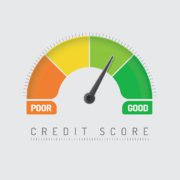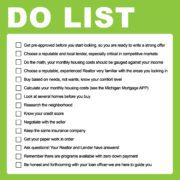Essential Steps to Homeownership
Owning a home is a significant milestone that involves a series of strategic steps. Here’s a concise guide to help you navigate the homebuying process efficiently.
1. Assess Your Finances
Begin by evaluating your financial health. Check your credit score, which plays a crucial role in securing a mortgage. Aim for a score of at least 620, though higher scores can qualify you for better rates. Analyze your savings to ensure you have enough for a down payment, closing costs, and other related expenses.
2. Determine Your Budget
Establishing a realistic budget is essential. Consider your income, existing debts, and monthly expenses. Use online calculators or consult a financial advisor to determine how much house you can afford. Keep in mind that your mortgage payment should ideally be no more than 28% of your gross monthly income.
3. Get Pre-Approved for a Mortgage
Before house hunting, get pre-approved for a mortgage. This step involves submitting financial documents to a lender who will then provide a letter stating the loan amount you qualify for. A pre-approval letter strengthens your offer when you find the right home.
4. Choose the Right Mortgage
Research various mortgage options to find the best fit for your situation. Common types include fixed-rate mortgages, adjustable-rate mortgages, FHA loans, VA loans, and USDA loans. Compare the terms, interest rates, and down payment requirements of each.
5. Find a Real Estate Agent
A knowledgeable real estate agent can guide you through the homebuying process. They can help you find properties that meet your criteria, negotiate offers, and navigate the complexities of closing a deal.
6. Start House Hunting
Begin your search with a clear list of must-haves and nice-to-haves. Consider factors like location, size, layout, and proximity to work, schools, and amenities. Attend open houses and schedule visits to see potential homes.
7. Make an Offer
Once you find your ideal home, make a competitive offer. Your real estate agent will help you determine an appropriate offer price based on market conditions and comparable properties. Be prepared for negotiations with the seller.
8. Get a Home Inspection
A thorough home inspection is vital to uncover any potential issues with the property. Hire a professional inspector to examine the home’s structure, systems, and overall condition. Use the inspection report to negotiate repairs or adjust your offer if necessary.
9. Secure Your Financing
After your offer is accepted, finalize your mortgage application. Your lender will require additional documentation and conduct an appraisal to ensure the property’s value aligns with the loan amount. Lock in your interest rate to protect against market fluctuations.
10. Close the Deal
Closing involves signing various legal documents and paying closing costs, which typically range from 2% to 5% of the home’s purchase price. Review the closing disclosure thoroughly and ensure all terms are as agreed.
11. Move In
Once the paperwork is complete and the keys are in your hand, it’s time to move in and enjoy your new home!
Following these steps will help you navigate the homebuying process with confidence and ease, bringing you closer to achieving your dream of homeownership.












Leave a Reply
Want to join the discussion?Feel free to contribute!